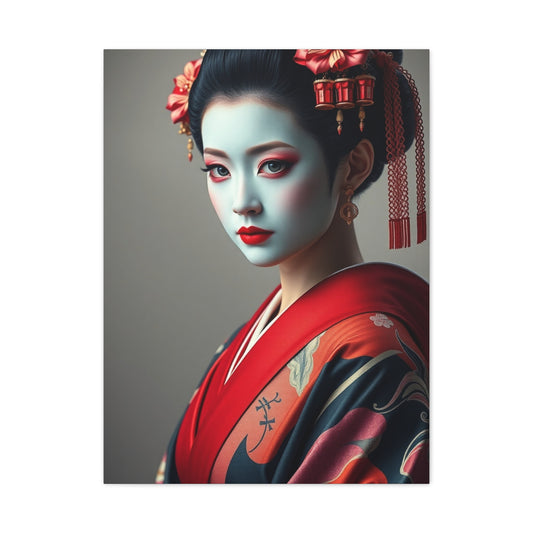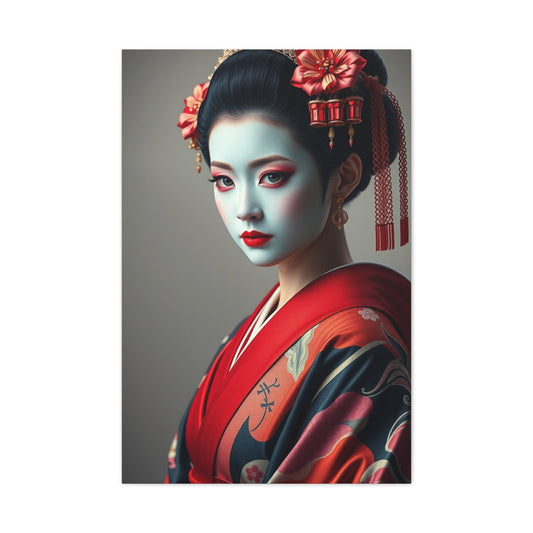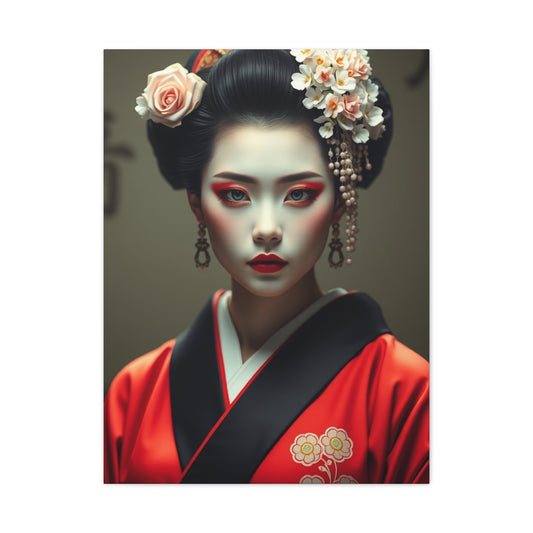Selection tools in Photoshop are crucial for any photographer or designer working with digital images. These tools allow you to isolate parts of an image, so you can make edits or adjustments to specific areas without affecting the rest of the image. Whether you need to retouch a photo, remove an object, or select an area to apply a filter, selection tools make the process faster, more precise, and easier to manage.
In this guide, we'll break down the essential Photoshop selection tools, explain their uses, and help you understand when and how to apply them for different tasks. Whether you're working on detailed photo editing or graphic design, mastering these selection tools is a key part of the Photoshop workflow.
|
Related Catagories: |
Understanding Selection Tools in Photoshop
Selection tools in Photoshop are designed to allow you to isolate and work with specific parts of an image. Once an area is selected, you can make changes to it independently of the rest of the image. This is essential for making targeted edits, such as adjusting the color, brightness, or sharpness of a particular area or applying a filter to only a portion of the image.
Photoshop offers a wide range of selection tools, from basic geometric shapes to more complex, freehand tools for precise detailing. Each selection tool is designed for a specific task, whether you're working with a color range, selecting an object, or outlining complex shapes. Understanding the strengths and limitations of each tool is essential for efficient editing.
The Key Features of Photoshop’s Selection Tools
Before diving into the specific tools, it's helpful to understand the customization options available. These settings allow you to adjust your selections, making them more precise and adaptable to different situations.
Understanding Selection Customizations in Photoshop: Adding, Subtracting, and Intersecting Selections
Photoshop offers a range of powerful selection tools that allow you to isolate specific areas of an image for adjustment. The real beauty of Photoshop’s selection tools lies in their flexibility, allowing you to create, refine, and modify selections in several ways. One of the key features that you should familiarize yourself with is how to add, subtract, and intersect selections. These options help you make complex selections that can be adjusted to your exact needs.
When working with Photoshop, you’ll often find yourself needing to tweak selections—whether you need to expand the area you’ve selected, remove certain parts, or focus on just the overlapping region of multiple selections. The four icons located at the top of the selection tool options bar are designed to help you do just that.
Add to Selection
The Add to selection option is one of the most commonly used tools when working with Photoshop’s selection tools. This feature allows you to extend the current selection by adding new areas to it. For example, if you have already selected a portion of an object but realize that you need to include more of the surrounding area, using the “Add to selection” icon will enable you to do so without losing your original selection.
This tool is perfect for instances where you need to create a more complex selection that requires you to merge different areas of an image. When selected, the tool will automatically let you keep adding new areas to your current selection, saving you the effort of having to start over each time.
Subtract from Selection
On the other hand, the Subtract from selection option allows you to remove unwanted areas from your selection. After creating an initial selection, you might find that some regions were included that you don’t need. For instance, when selecting a subject, the tool might inadvertently include the background or other unnecessary areas. By using the subtract icon, you can eliminate these regions from your selection without having to start again.
This option is highly beneficial when refining detailed selections, particularly when the selection extends beyond the boundaries of the object or area you intend to edit. You can simply brush over the areas you want to remove, and Photoshop will refine the selection accordingly. It allows for much more precision, making it easier to isolate only the parts of the image you want to modify.
Intersect Selections
The Intersect selections option is useful when you want to focus on just the overlapping areas of two selections. This method allows you to create a new selection that only includes the parts where two existing selections intersect. It is particularly helpful when working with complex images where you might want to combine multiple areas of focus or create a selection that includes a shared area between two separate selections.
For instance, if you’re trying to select an object that partially overlaps with another object or background, the intersect tool will allow you to narrow the selection down to just the intersecting portion. This method is ideal when working on precise edits where you need to refine your focus or reduce the area of effect for adjustments.
Feathering Selections for Smooth Edges
In Photoshop, feathering is a crucial concept for creating smooth transitions between selected and non-selected areas of an image. Feathering works by softening the edges of your selection, creating a gradient or a smooth transition from the selected area to the rest of the image. This is particularly useful for isolating subjects that need to blend seamlessly with their background, like soft textures, hair, or fabrics.
What Does Feathering Do?
Feathering applies a gradual blur or softening to the edge of your selection, making the boundary less harsh and allowing it to transition smoothly into the surrounding pixels. The feather effect is applied in terms of pixels, and the higher the number of pixels you set, the softer the transition will be. For example, a feather of 0 pixels will result in a sharp, hard-edged selection, where the boundary is clearly defined. On the other hand, increasing the feathering will create a soft, more gradual blending effect along the selection’s edges.
This feature is especially useful when editing subjects that are not perfectly defined, such as human hair or leaves, where the transition between the subject and the background can be difficult to separate cleanly. Feathering helps blend those soft edges and makes the selection look more natural, eliminating harsh lines that may distract from the overall image.
How to Use Feathering Effectively
Feathering is most effective when used with subjects that have blurred edges or a subtle transition between the subject and its background. However, you need to be cautious not to overdo it. Applying too much feathering can cause your selection to include unwanted elements, blurring the distinction between the subject and the background. It’s important to experiment with different feathering values to find the best balance for each selection.
If you’re working with objects that have hard edges or a defined boundary from the background (such as architectural details or objects in the foreground), feathering may not be necessary. Instead, a clean, sharp edge may be preferable. Feathering is ideal for softer elements but can be unnecessary for subjects with clear and defined outlines.
Inverse Selection: Editing Everything Except the Selected Area
The Inverse selection feature in Photoshop is a powerful tool when you want to work on areas of an image that are outside your current selection. For example, if you select a subject in a photo and then want to adjust the background, the inverse function allows you to reverse the selection, making the previously selected area unselected and vice versa.
How Inverse Selection Works
To perform an inverse selection, simply make your initial selection using any of Photoshop’s selection tools. After completing your selection, go to the Select > Inverse option in the top menu, or use the shortcut Ctrl + Shift + I (Windows) or Cmd + Shift + I (Mac). This will swap the selection, so everything outside the current selection becomes active, allowing you to edit the background, remove distractions, or adjust the surrounding elements without affecting the object you initially selected.
Inverse selection is extremely helpful for tasks like background adjustments or when you want to keep the subject untouched while modifying everything else around it. For example, you might use the inverse selection feature to darken a background while leaving the subject bright, or to blur a background without affecting the person or object in the foreground.
The Most Common Selection Tools in Photoshop
Now that we’ve covered the basic features of selection tools, let’s take a look at the most commonly used selection tools in Photoshop, each suited for different tasks.
Marquee Tools: Precision Selections with Simplicity
The Marquee tools are among the most straightforward selection tools in Photoshop. These tools allow users to create geometric selections, either rectangular, elliptical, or even in one-pixel increments. Their main advantage lies in their ability to make quick, clean selections with little effort. These tools are especially useful when you need simple shapes or lines to perform tasks such as cropping, creating shapes, or even just isolating an area for further editing.
Rectangular Marquee Tool
As the name suggests, the Rectangular Marquee Tool allows you to create rectangular selections within your image. It is one of the most commonly used tools in Photoshop, as it provides an easy way to crop or isolate parts of an image. By simply clicking and dragging across the canvas, you can create a rectangular selection with precise edges. This is ideal for creating clean and geometric shapes, which are often needed in graphic design, web design, and photo manipulation. Whether you're working on a simple composition or performing advanced editing, the Rectangular Marquee Tool serves as an invaluable resource for any type of creative project.
Elliptical Marquee Tool
The Elliptical Marquee Tool functions similarly to the rectangular version but creates elliptical (oval-shaped) selections. This tool is particularly useful for selecting circular or elliptical objects in your images, such as logos, product designs, and other elements that require curved edges. In some cases, the tool can be used creatively to make effects such as circular cropping or vignette effects. By clicking and dragging, you can create an ellipse or a perfect circle. If you hold down the Shift key while dragging, Photoshop will constrain the selection to a perfect circle, which is useful for symmetrical shapes.
Single Row and Single Column Marquee Tools
For extremely precise selections, the Single Row and Single Column Marquee tools are perfect. These tools are designed to create a one-pixel selection, either horizontally or vertically. While these may seem like niche tools, they are invaluable when you need to create thin lines or very specific pixel-based selections. For instance, they can be used to make pixel-perfect edits, add horizontal or vertical lines in a design, or isolate very thin parts of an image. These tools might not be used frequently, but they can save you time when working with fine details that need extreme precision.
Lasso Tools: Flexibility and Custom Selections
The Lasso tools in Photoshop offer more flexibility compared to the Marquee tools, allowing you to select irregular shapes and outlines. They provide the freedom to make freehand selections or create selections with straight edges, making them ideal for objects with complex or unpredictable contours. Unlike the geometric shapes of the Marquee tools, the Lasso tools are suited for freeform selections, and they are perfect when you need to isolate specific elements that don’t conform to straight lines or curves.
Lasso Tool
The Lasso Tool is the most basic version of the Lasso tools, allowing you to draw freehand selections by clicking and dragging around an object. This tool is particularly useful when you need to make selections around complex or irregular edges, such as natural landscapes, people, or anything that doesn’t have a defined shape. With the Lasso Tool, you have full control over your selection, enabling you to trace the edges of an object in a fluid motion. Though it requires a steady hand, the Lasso Tool allows for great precision when making freehand selections that would otherwise be difficult to achieve with other tools.
Polygonal Lasso Tool
The Polygonal Lasso Tool offers a more structured approach to freehand selection, as it lets you create selections with straight edges. This tool is ideal for objects with sharp corners and linear edges, such as buildings, furniture, or other architectural features. Instead of dragging continuously like the Lasso Tool, you click along the edges of an object to form a selection with straight lines connecting each click. By clicking along the perimeter of an object, you can create a geometric selection that’s perfect for objects that don’t require the freeform flexibility of the Lasso Tool. This tool is also particularly useful when you need to make selections for precise edits or when the object has well-defined, straight borders.
Magnetic Lasso Tool
The Magnetic Lasso Tool is an advanced version of the Lasso Tool that automatically detects the edges of an object as you move your cursor around it. This tool is ideal for selecting objects that have a high contrast between the subject and the background, such as a person against a clear sky or a brightly colored product on a plain surface. As you trace along the object’s edge, the Magnetic Lasso Tool "snaps" to the outline, making it easier and faster to select complex shapes. You can fine-tune the selection by adjusting the tool’s settings, such as the width of the magnetic edge detection or the contrast threshold, allowing for greater control over the final result. This tool is a game-changer when it comes to selecting difficult or intricate objects with fine details, such as hair or fur.
Why Use Marquee and Lasso Tools?
Both Marquee and Lasso tools provide versatile selection options, catering to different types of editing needs. While Marquee tools are suited for creating geometric shapes with straight edges, the Lasso tools allow for greater flexibility when dealing with irregular objects. Together, these tools form a powerful duo for anyone looking to perform detailed and creative image editing.
One of the main reasons to use these tools is for isolation. Whether you're working on image manipulation, digital art, or design projects, being able to isolate a particular section of an image is crucial for enhancing or altering specific parts without affecting the rest of the composition. By mastering the Marquee and Lasso tools, you can take full control over your selections and create the perfect image adjustments.
These tools are also incredibly useful for advanced techniques, such as compositing, masking, and retouching. For example, when creating composite images, the ability to accurately select an object from one photo and place it into another is essential. The precision and flexibility of the Marquee and Lasso tools make them perfect for tasks like these, especially when combined with Photoshop’s other editing functions like layer masking, feathering, and blending modes.
Quick Selection Tools and Pen Tool in Photoshop: An In-Depth Guide
In the world of photo editing, one of the most valuable skills you can possess is the ability to make accurate and efficient selections. Whether you're working on an intricate design, compositing images, or retouching photos, the ability to isolate specific elements of an image allows you to manipulate them in countless ways. While there are various selection methods in Photoshop, Quick Selection tools and the Pen tool stand out for their efficiency and precision. These tools are essential for anyone looking to enhance their editing skills and streamline their workflow.
This comprehensive guide explores the Quick Selection tools, which allow for fast and automated selections, as well as the Pen tool, renowned for its unmatched accuracy and detail. We'll break down each tool, discuss its capabilities, and provide insights into when and how to use them most effectively.
Quick Selection Tools: Speed and Simplicity
Quick Selection tools are designed to speed up the process of selecting objects in Photoshop, especially when the subject has clear edges or stands out from the background. These tools utilize smart algorithms to automatically detect and refine the selection, making them ideal for quickly isolating areas in an image. Whether you're working with a simple photograph or a complex composition, Quick Selection tools help you save time while maintaining high accuracy.
|
Related Catagories: |
Object Selection Tool
The Object Selection Tool is one of the most advanced and intuitive tools in the Quick Selection category. It automatically detects and selects objects in an image with minimal effort. To use the Object Selection Tool, simply drag a rectangle or a lasso around the object you want to select. Photoshop will analyze the surrounding area and refine the selection to include only the object, while excluding the background. This tool works best when there is a clear distinction between the subject and the background, such as when you’re working with well-lit images where the subject is sharp and prominent.
What sets the Object Selection Tool apart is its ability to adapt to various image types. It uses Adobe Sensei, an AI-powered technology, to detect edges and refine the selection intelligently. It works well for a wide range of images, including portraits, product photography, and nature shots, where subjects have a clear, well-defined border. Additionally, the tool allows for easy refinement and adjustments after the initial selection, giving you full control over the final result.
Quick Selection Tool
The Quick Selection Tool is one of the most commonly used tools in Photoshop, offering a balance of speed and accuracy. It operates similarly to a brush, allowing you to "paint" over the area you want to select. As you brush over the object, Photoshop automatically detects the edges and adds pixels that match the brush’s direction. The tool uses algorithms that help identify the boundaries of an object, making it an excellent choice for selecting areas with varying levels of contrast or complex details.
One of the key benefits of the Quick Selection Tool is its ability to adjust on the fly. If you accidentally select too much or too little, you can easily adjust the brush size or refine the selection by adding or subtracting from the area. The tool also offers a dynamic range of brush sizes, which allows you to paint over both large and small areas with precision. As you work, Photoshop continually refines the selection to ensure that the edges are clean, resulting in a smooth and accurate selection.
Magic Wand Tool
The Magic Wand Tool is a classic selection tool that works by selecting areas of an image based on color similarity. Unlike the Object Selection Tool or Quick Selection Tool, which are based on edge detection, the Magic Wand Tool relies on the color characteristics of the pixels in the image. The tool selects pixels that share a similar color to the one you click on, making it perfect for selecting large areas of uniform color or specific tones in an image.
One of the defining features of the Magic Wand Tool is the Tolerance setting, which controls how many similar colors Photoshop will include in the selection. A lower tolerance value selects only colors that are very similar to the clicked pixel, while a higher tolerance value includes a broader range of similar colors. This makes the Magic Wand Tool particularly useful for selecting solid-colored objects, backgrounds, or sections of an image with clear color distinctions.
While the Magic Wand Tool is powerful, it may not always provide perfect selections, especially when there are gradients or subtle color transitions. In such cases, you can use the tool in combination with other selection methods, like the Quick Selection Tool, to refine the edges and achieve a more precise result.
Pen Tool: Precision at Its Best
For the most detailed and accurate selections, the Pen Tool is the go-to option in Photoshop. While it may seem a bit more complex than the other selection tools, its precision and flexibility make it the best choice for high-end retouching, vector art, and any situation where you need absolute control over the selection edges. The Pen Tool is especially useful when dealing with complex shapes, such as curves, intricate outlines, and smooth transitions that other tools might struggle to handle.
Using the Pen Tool
The Pen Tool works by allowing you to manually plot anchor points around the object you wish to select. These anchor points are connected by curves or straight lines, forming a path that precisely outlines the shape of the object. Unlike the brush-based Quick Selection tools, the Pen Tool creates a vector path that is infinitely adjustable, making it perfect for high-precision tasks.
To use the Pen Tool, you begin by clicking to place anchor points along the edge of the object. After placing the points, Photoshop automatically creates curves between them. If the edges of the object are straight, you can click directly along the line, creating straight paths. If the object has curves, you can drag the anchor points to create smooth, flowing curves that closely follow the contours of the object.
One of the significant advantages of using the Pen Tool is the ability to refine your selection at any stage of the process. If an anchor point is not in the right place, you can adjust it without disturbing the rest of the path. This level of control ensures that you can create the cleanest, most precise selections possible.
Refining the Path
After creating your path with the Pen Tool, you can convert it into a selection. To do this, right-click the path and choose "Make Selection." Photoshop will then turn the path into a selection that you can use for further editing or manipulation. The Pen Tool is particularly effective for situations that require clean, smooth edges, such as when you need to extract a subject from a complex background, create intricate cutouts, or make advanced adjustments in compositing work.
When to Use Each Tool
Each selection tool in Photoshop has its strengths and weaknesses, and choosing the right tool depends on the specific task you're working on. The Quick Selection tools are perfect for rapid selections, especially when the subject is clearly distinguishable from the background. These tools are best suited for images with defined edges, such as portraits, product photography, or simple scenes where the object contrasts well with the background.
On the other hand, the Pen Tool excels in situations where absolute precision is needed. If you’re working with complex or irregular shapes, the Pen Tool provides the level of control and accuracy required for detailed retouching, vector illustrations, and fine artwork. While it might take a bit more time and practice to master, it’s invaluable for tasks where clean, smooth selections are a must.
Selection Brush Tool, Focus Area Tool, Color Range Tool, and Sky Selection Tool in Photoshop: A Comprehensive Guide
In the world of photo editing, selecting specific parts of an image is a fundamental step for achieving precision and enhancing your creative vision. Whether you're a professional photographer, digital artist, or graphic designer, the ability to isolate certain areas for further manipulation can make a significant difference in the quality of your work. Adobe Photoshop has introduced a variety of advanced selection tools to help users refine their workflow and streamline the selection process. Among these, the Selection Brush tool, Focus Area tool, Color Range tool, and Sky Selection tool stand out for their unique functionalities and applications.
In this guide, we'll explore each of these tools in detail, discussing their capabilities, use cases, and best practices for incorporating them into your projects. By understanding the strengths and applications of these powerful selection tools, you can take your editing skills to new heights.
Selection Brush Tool: Versatile and Precise Selections
The Selection Brush tool is one of the newer additions to Photoshop, offering an intuitive way to make selections. Unlike traditional selection tools, which rely on predefined shapes or edges, the Selection Brush tool lets you paint directly over the areas you want to select. This dynamic tool allows for quick and detailed selections with ease, making it a valuable asset for any designer or photographer.
To use the Selection Brush tool, simply paint over the desired areas in your image. Photoshop will automatically create a selection or mask based on the strokes you make. The brush's edges are designed to automatically detect the boundaries of the area you're painting, which helps in creating smooth and clean selections. The flexibility of this tool comes from the ability to adjust the size, hardness, and opacity of the brush, allowing you to make both broad and fine selections.
This tool is especially useful for tasks such as refining complex selections, painting over hair or fur, or isolating areas with irregular edges. With its ability to quickly adapt to intricate details, the Selection Brush tool is a great option for photographers who need to make fine adjustments to specific parts of an image. Whether you're focusing on subtle details or large areas, the brush’s versatility makes it an essential part of any workflow that requires precision.
Focus Area Tool: Detecting Sharp Focus Areas in Depth
The Focus Area tool is invaluable when working with images that have varying focal depths, especially in macro photography or any scenario where the depth of field plays a critical role. In such images, some areas are in sharp focus, while others are blurred due to the shallow depth of field. Manually selecting these areas can be time-consuming and challenging, but the Focus Area tool automates this process with remarkable accuracy.
When you use the Focus Area tool, Photoshop automatically detects the areas of an image that are in sharp focus and creates a selection based on the focus plane. The tool analyzes the sharpness levels across the image and identifies edges that correspond to areas in focus. This makes it an excellent choice when working with macro shots, portraits, or any photography where the subject is sharply defined against a blurred background.
Additionally, the Focus Area tool allows you to adjust the amount of focus detection using its sliders. This makes it easier to fine-tune the selection by controlling the radius, smoothness, and transitions between in-focus and out-of-focus areas. If your goal is to adjust the sharpness, apply filters, or even replace blurred areas, the Focus Area tool helps you achieve professional results with minimal effort.
For photographers dealing with shallow depth of field, the Focus Area tool offers a quick, automated way to select only the areas of an image that require attention, saving you time and allowing you to focus on the creative aspects of your work.
Color Range Tool: Color-Specific Selections for Precise Edits
The Color Range tool is an incredibly powerful selection tool that allows you to select areas of an image based on their color properties. This tool is particularly useful for color-specific edits, such as changing the hue of a sky, adjusting the tones of a subject, or isolating a specific color to enhance its vibrancy. Unlike traditional selection tools that rely on edges or areas of contrast, the Color Range tool uses the color information in the image to make selections.
To use the Color Range tool, you simply click on a color in your image using the pipette tool. Photoshop will then select all pixels in the image that match or are similar to the chosen color. You can further adjust the selection by manipulating the "Fuzziness" slider. This slider controls how broad or narrow the selection range will be, allowing you to select a wider variety of similar colors or fine-tune the selection to a more specific color range.
The Color Range tool is especially useful when you need to perform tasks like changing the color of a background, enhancing the saturation of a particular color, or isolating a color to create a mask. It can also be helpful in composite work when you want to target specific colors within an image to make adjustments, such as when swapping out backgrounds or creating custom effects.
One of the advantages of using the Color Range tool is that it selects color tones rather than edges or areas of contrast, which makes it easier to make precise color adjustments without affecting the entire image. This tool is ideal for creative professionals working with vibrant, multi-colored images who need to perform complex color-based selections quickly.
Sky Selection Tool: Simplifying Landscape Photography
For landscape photographers, the Sky Selection tool is a game-changing feature that simplifies the process of selecting the sky in an image. Traditionally, isolating the sky from a landscape image required intricate masking or manual selection, a time-consuming process that could be difficult to achieve with precision. With the Sky Selection tool, Photoshop automates this task, allowing users to quickly and accurately select the sky in an image without affecting other elements of the scene.
The Sky Selection tool works by analyzing the image to detect the sky's unique characteristics. It automatically recognizes clouds, blue skies, or any other recognizable sky features, making it easy to adjust or replace the sky without the need for detailed manual work. This tool is especially useful when you want to enhance the sky by adding dramatic clouds, adjusting exposure, or swapping in a completely different sky for creative purposes.
Once you’ve selected the sky, you can easily adjust it using Photoshop’s other editing tools, such as the Hue/Saturation adjustment layers, or even use it to apply gradient filters or replace the sky with one from another image. The Sky Selection tool is also particularly useful for photographers who frequently shoot outdoor or landscape scenes, as it saves considerable time and effort when working with large images that require fine adjustments to the sky.
In addition to speeding up the editing process, the Sky Selection tool ensures that your selections are precise, maintaining a natural look that blends seamlessly with the rest of the image. This tool has become an essential part of landscape photography workflows, allowing photographers to create striking images with ease.
When to Use Each Tool
Each of the selection tools discussed in this guide is suited to specific types of editing tasks. The Selection Brush tool is ideal for quick and flexible selections, especially when you need to paint over irregular areas or complex shapes. It provides precision and speed, making it an excellent tool for refining selections and working with detailed elements.
The Focus Area tool is invaluable for macro photographers or those working with images that have varying depths of field. It quickly isolates areas in sharp focus, saving you time and effort when selecting in-focus regions of an image. This tool is a must-have when working with shallow depth of field, allowing you to make accurate selections of important details.
The Color Range tool is perfect for making color-specific edits, especially when you need to adjust hues or isolate particular colors. It is an excellent choice for anyone working with vibrant, multi-colored images who needs precise color adjustments without disturbing other areas.
Finally, the Sky Selection tool is a lifesaver for landscape photographers. It automatically detects and selects the sky, making it easier to replace, enhance, or adjust the sky without affecting other parts of the scene. This tool is essential for anyone working with outdoor or landscape photography and wanting to create dramatic, impactful skies with minimal effort.
Conclusion: Mastering Selection Tools for Efficient Editing
Selection tools are an essential part of every Photoshop user’s toolkit. With a wide range of options available, you can make fast and accurate selections for nearly any type of project. Whether you're working with basic shapes or detailed freehand selections, understanding which tool to use for each task will save you time and ensure precise results. With practice, you’ll be able to refine your workflow and elevate your editing process, making your images stand out in ways you never thought possible.
























